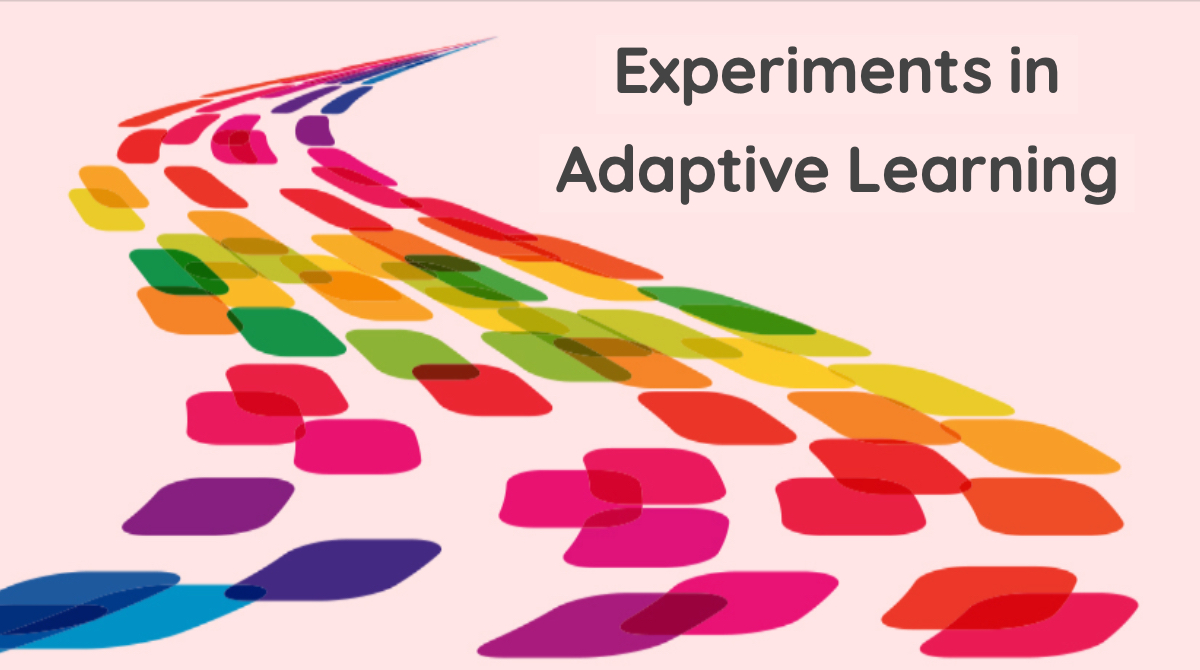Experiments in Adaptive Learning
Over the last three years colleagues at Bolton College have been experimenting with adaptive learning. Our work has explored the affordances that arise when we take advantage of the wider campus dataset to inform computer mediated teaching, learning and assessment; particularly through the use of online tutorials within Moodle, the College's learning management system. We have paid particular attention to how adaptive learning/hypermedia makes use of the campus student dataset to deliver contextualised online learning and assessment materials to students.

Our experiments in adaptive learning are enabling our online tutorials to exhibit the following traits:
- Learning and assessment materials can be contextualised or personalised to meet the needs and requirements of individual students as they engage with the College's library of online tutorials. The dataset across the campus is used to inform the behaviour of our online tutorials. Context can be delivered granularly as each student progresses through a given tutorial. A broad range of variables can be used to inform the behaviour of each tutorial; such as the student's vocational area, academic level, current academic progress, name, gender, learning support needs, academic goals and more.
- Within Moodle, adaptive teaching and learning is bi-directional. Through the medium of the online tutorial, our teachers are able to curate and deliver adaptive and contextualised learning and assessment materials to their students. Likewise, our students are able to pose subject specific questions to the College's Ada service to elicit further information on a given topic. Our online tutorials feature the ask Ada button. Each tutorial is supported by a subject specific chatbot. When a question is posed by a student within a tutorial, the Ask Ada service will identify the unique identification code that is carried by the query and assign the correct chatbot to respond to the question. The responses from the Ada service can incorporate the use of text, hyper-links, documents, images and video. Subject specific chatbots can be tailoured to meet the needs of students at various academic levels.
- Conversational tutorials enable teachers to take advantage of natural language processing to facilitate online learning and assessment through the use of open-ended questions. For example, a teacher may ask her students to respond to the following question in an online tutorial: "Could you tell me why good customer service is important to businesses and other organisations?" The ability to record, analyse and assess a wide range of possible responses to such a question is a key attribute of the service. Traditionally, online assessment practices were seen as being rather narrow; and online instructional designers could only offer teachers a limited set of options which typically meant the use of multiple-choice questions or drag-and-drop activities.
- Our work on open-ended questions has progressed further with the advent of our FirstPass service. As students respond to open-ended questions using free form text, the FirstPass service offers real-time feedback to them. At the present moment in time the service is presented to students as a standalone service. One of our future experiments in adaptive learning will determine if the FirstPass service can be presented to students within an online tutorial. If this is the case, the use of open-ended questions within our online tutorials will soon become the norm.
- If your school, college or university is planning to curate online tutorials that present adaptive and contextualised learning and assessment materials to your students you will need to manage the combinatorial explosion of content that exhibits itself when you are attempting to deliver personalised content to each student via your learning management system. For example, let's examine an adaptive online tutorial which offers information, advice and guidance to students as they prepare for a job interview. If the careers team wishes to use the tutorial to advise students about what to wear for a job interview the instructional designers will need to curate content that reflects gender, age and the industry in which the student is attending an interview for. The volume of content rises further if the tutorial needs to consider the needs of students who are wheelchair users, visually impaired and so on and so forth. One of the experiments that Bolton College is currently exploring centres on managing the content explosion by physically removing the assets from the tutorial and positioning them within a database that resides outside the tutorial and the institution's learning management system. If the experiment is successful, the rising volume of content becomes easier to manage. Notably, the content's place in a database leads to further opportunities for the instructional design team.
- The remote management of content can also be applied to other assets that are visible to students and teachers within an online tutorial. The design and behaviour of the Ask Ada service is one of these assets. If the design is altered, the change is reflected automatically across all the tutorials that feature the service. The same logic can be applied to other assets such as the progress bar or navigation buttons.
If you are interested in learning more about adaptive learning please refer to the following articles that I wrote in 2016:
